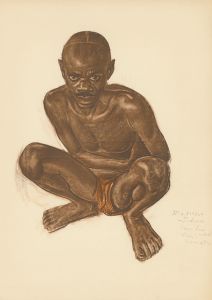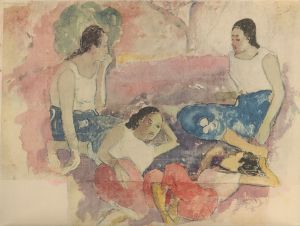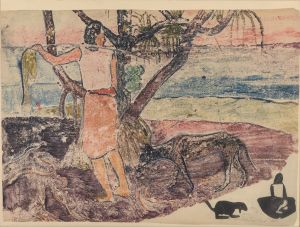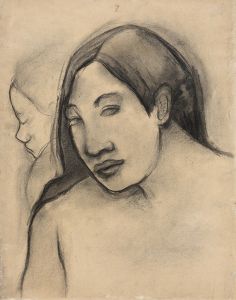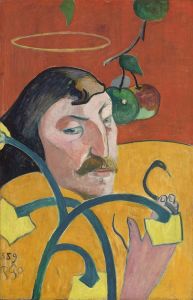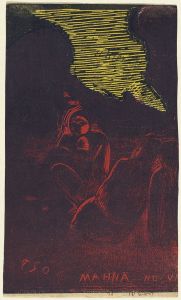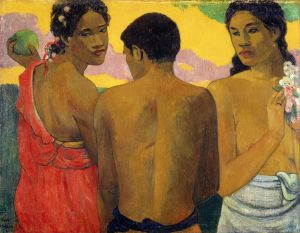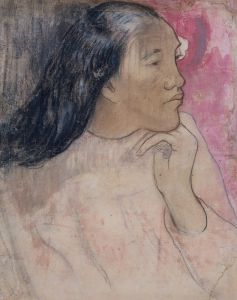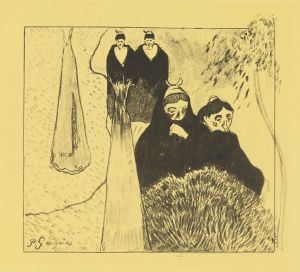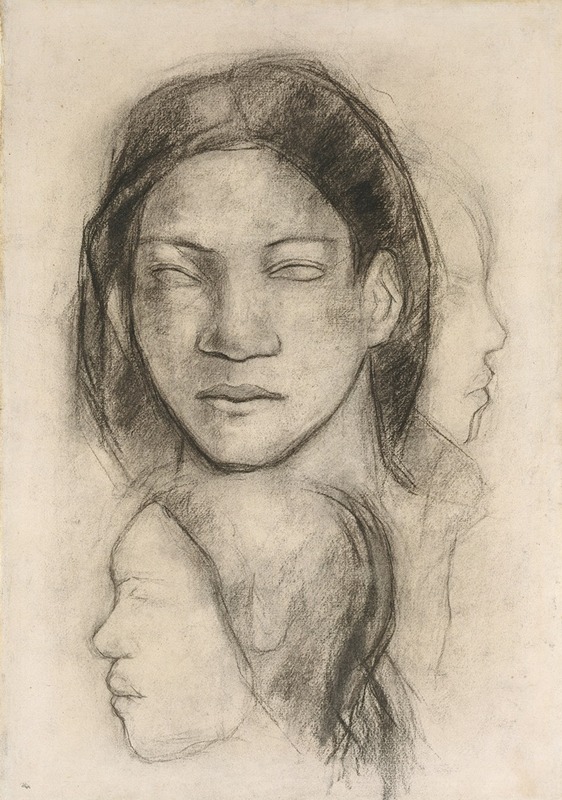
Tahitian Faces
A hand-painted replica of Paul Gauguin’s masterpiece Tahitian Faces, meticulously crafted by professional artists to capture the true essence of the original. Each piece is created with museum-quality canvas and rare mineral pigments, carefully painted by experienced artists with delicate brushstrokes and rich, layered colors to perfectly recreate the texture of the original artwork. Unlike machine-printed reproductions, this hand-painted version brings the painting to life, infused with the artist’s emotions and skill in every stroke. Whether for personal collection or home decoration, it instantly elevates the artistic atmosphere of any space.
"Tahitian Faces" is a painting by the French Post-Impressionist artist Paul Gauguin. Created in 1899, this work is part of Gauguin's extensive body of work produced during his time in Tahiti, where he sought to escape European civilization and immerse himself in what he perceived as a more "primitive" and pure culture.
Paul Gauguin first traveled to Tahiti in 1891, driven by a desire to find an untouched paradise and to explore new artistic possibilities. His time in Tahiti had a profound impact on his work, leading to a distinctive style characterized by bold colors, strong outlines, and a synthesis of symbolic and natural elements. "Tahitian Faces" exemplifies these characteristics, showcasing Gauguin's fascination with the people and culture of Tahiti.
The painting depicts two Tahitian women, rendered in Gauguin's signature style. The figures are presented in a frontal pose, with their faces and expressions capturing a sense of calm and introspection. Gauguin's use of color is particularly notable in this work; he employs a rich palette of warm tones that highlight the women's skin and the vibrant environment around them. The background is simplified, focusing attention on the subjects and allowing their presence to dominate the composition.
Gauguin's approach to portraying the Tahitian people was influenced by his desire to convey an idealized vision of their culture. He often depicted his subjects with a sense of nobility and serenity, contrasting with the more dynamic and sometimes chaotic scenes of European life. This idealization, however, has been the subject of much critical discussion, as it reflects Gauguin's own romanticized and sometimes problematic views of the "exotic" other.
"Tahitian Faces" is significant not only for its artistic qualities but also for its place within Gauguin's broader oeuvre. It reflects his ongoing exploration of identity, both his own and that of the people he encountered. The painting is a testament to Gauguin's skill in capturing the essence of his subjects while also imbuing his work with a deeper, often symbolic meaning.
Today, "Tahitian Faces" is held in high regard as an important example of Gauguin's work during his Tahitian period. It continues to be studied and appreciated for its contribution to the Post-Impressionist movement and for its insight into Gauguin's complex relationship with the cultures he sought to depict. The painting remains a powerful reminder of the ways in which art can bridge different worlds and offer a window into the artist's vision of humanity.





